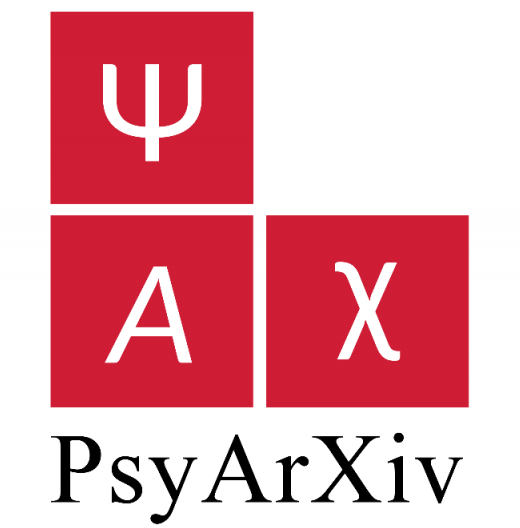publications
 cpm: A Python Library for Theory-Driven Modelling in Computational Psychiatry
cpm: A Python Library for Theory-Driven Modelling in Computational Psychiatry
OSF. 2025.
10.31234/osf.io/6jc3t_v1
@preprints{dome2025cpm, title = {cpm: A Python Library for Theory-Driven Modelling in Computational Psychiatry}, shorttitle = {cpm}, author = {Dome, Lenard and Kadri, Kenza and Wagner, Ben J. and Webb, Andrew and Hauser, Tobias U.}, year = {2025}, publisher = {OSF.}, urldate = {2025-09-15}, month = sep, doi = {10.31234/osf.io/6jc3t_v1}, archiveprefix = {OSF}, preview = {psyarxiv.png}, keywords = {cognitive science,computational modeling,computational psychiatry,open-source software,scientific software}, supp = {https://github.com/DevComPsy/cpm}, pdf = {https://osf.io/preprints/psyarxiv/6jc3t_v1} } Metacognitive Antecedents to States of Mental Ill-Health: Drops in Confidence Precede Symptoms of OCD
Metacognitive Antecedents to States of Mental Ill-Health: Drops in Confidence Precede Symptoms of OCD
Research Square. 2025.
10.21203/rs.3.rs-7544256/v1
@preprints{marzuki2025metacognitive, title = {Metacognitive Antecedents to States of Mental Ill-Health: {{Drops}} in Confidence Precede Symptoms of {{OCD}}}, shorttitle = {Metacognitive Antecedents to States of Mental Ill-Health}, author = {Marzuki, Aleya A. and Kosina, Luca A. and Dome, Lenard and Hewitt, Sam R. C. and Hauser, Tobias U.}, year = {2025}, month = sep, publisher = {Research Square.}, preview = {research_square.jpeg}, issn = {2693-5015}, doi = {10.21203/rs.3.rs-7544256/v1}, urldate = {2025-09-15}, archiveprefix = {Research Square}, copyright = {All rights reserved}, pdf = {https://assets-eu.researchsquare.com/files/rs-7544256/v1_covered_db775083-d3bf-4feb-b0d3-c64959bb3024.pdf?c=1757488481}, supp = {{https://osf.io/x7h5k/}, {https://github.com/aleyaamarzuki/EMCT-OCD}} } g-Distance: On the Comparison of Model and Human Heterogeneity.
g-Distance: On the Comparison of Model and Human Heterogeneity.
Psychological Review 2025.
https://doi.org/10.1037/rev0000550
@article{dome2025gdistance, title = {g-{{Distance}}: {{On}} the Comparison of Model and Human Heterogeneity.}, shorttitle = {g-{{Distance}}}, author = {Dome, Lenard and Wills, Andy J.}, year = {2025}, journal = {Psychological Review}, volume = {132}, number = {3}, month = jun, pages = {632--655}, publisher = {American Psychological Association}, issn = {0033-295X}, doi = {https://doi.org/10.1037/rev0000550}, urldate = {2025-04-16}, langid = {english}, pdf = {https://psyarxiv.com/ygmcj}, selected = {true}, preview = {apa.png}, bibtex_show = {true} } Better generalization through distraction? Concurrent load reduces the size of the inverse base-rate effect
Better generalization through distraction? Concurrent load reduces the size of the inverse base-rate effect
Psychonomic Bulletin & Review. 2025.
https://doi.org/10.3758/s13423-025-02661-1
@article{dome2025better, title = {Better generalization through distraction? Concurrent load reduces the size of the inverse base-rate effect}, journal = {Psychonomic Bulletin & Review.}, author = {Dome, Lenard and Wills, Andy J.}, year = {2025}, month = feb, preview = {psychonomic.png}, doi = {https://doi.org/10.3758/s13423-025-02661-1}, pdf = {https://doi.org/10.31234/osf.io/eskr9}, supp = {{https://osf.io/u8kcb/}, {https://osf.io/ng8kj/}}, bibtex_show = {true}, selected = {true} } Errorless irrationality: removing error-driven components from the inverse base-rate effect paradigm
Errorless irrationality: removing error-driven components from the inverse base-rate effect paradigm
Proceedings of the Annual Meeting of the Cognitive Science Society. 2023.
https://doi.org/10.31234/osf.io/936bj
@inproceedings{dome2023errorless, title = {Errorless irrationality: removing error-driven components from the inverse base-rate effect paradigm}, author = {Dome, Lenard and Wills, Andy J.}, booktitle = {Proceedings of the Annual Meeting of the Cognitive Science Society.}, volume = {45}, number = {45}, year = {2023}, pdf = {https://psyarxiv.com/936bj/}, doi = {https://doi.org/10.31234/osf.io/936bj}, bibtex_show = {true}, preview = {cogsci.png}, pages = {237-243}, supp = {{https://osf.io/auwvt/}, {https://osf.io/2tmc4/}} } SUSTAIN captures category learning, recognition, and hippocampal activation in a unidimensional vs information-integration task
SUSTAIN captures category learning, recognition, and hippocampal activation in a unidimensional vs information-integration task
Proceedings of the Annual Meeting of the Cognitive Science Society. 2021.
https://escholarship.org/uc/item/5r98q3dr
@inproceedings{dome21sustain, first_author = {true}, title = {SUSTAIN captures category learning, recognition, and hippocampal activation in a unidimensional vs information-integration task}, author = {Dome, Lenard and Edmunds, Charlotte E. R. and Wills, Andy J.}, keywords = {categorization, recognition memory, formal model, modelling}, booktitle = {Proceedings of the Annual Meeting of the Cognitive Science Society.}, volume = {43}, year = {2021}, pages = {3013-3019}, address = {Austin, TX: Cognitive Science Society}, pdf = {https://raw.githubusercontent.com/lenarddome/publications/main/pdf/dome2021sustain.pdf}, supp = {https://osf.io/jc9xs/}, doi = {https://escholarship.org/uc/item/5r98q3dr}, osf = {https://osf.io/jc9xs/}, abbr = {proceedings}, preview = {cogsci.png}, bibtex_show = {true} } Representing uncertainty in the Rescorla-Wagner model: blocking, the redundancy effect, and outcome base rate
Representing uncertainty in the Rescorla-Wagner model: blocking, the redundancy effect, and outcome base rate
Open Journal of Experimental Psychology and Neuroscience 2021.
https://doi.org/10.46221/ojepn.2021.66233
@article{spicer2021representing, title = {Representing uncertainty in the Rescorla-Wagner model: blocking, the redundancy effect, and outcome base rate}, author = {Spicer, Stuart G. and Wills, Andy J. and Jones, Peter M. and Mitchell, Chris J. and Dome, Lenard}, keywords = {associative learning, prediction error, uncertainty, modelling}, year = {2021}, journal = {Open Journal of Experimental Psychology and Neuroscience}, url = {https://doi.org/10.46221/ojepn.2021.6623}, doi = {https://doi.org/10.46221/ojepn.2021.66233}, pdf = {https://www.ojepn.com/images/2021/2021-6623.pdf}, osf = {https://osf.io/7u6re/}, supp = {https://osf.io/7u6re/}, preview = {ojepn.png}, bibtex_show = {true} } Is the Letter Cancellation Task a Suitable Index of Ego Depletion?
Is the Letter Cancellation Task a Suitable Index of Ego Depletion?
Social Psychology 2019.
10.1027/1864-9335/a000393
@article{wimmer2019letter, title = {Is the Letter Cancellation Task a Suitable Index of Ego Depletion?}, author = {Wimmer, Marina C. and Dome, Lenard and Hancock, Peter J. B. and Wennekers, Thomas}, ketwords = {ego-depletion, inhibitory control, letter cancellation, replication, conceptual questions}, journal = {Social Psychology}, year = {2019}, publisher = {Hogrefe Publishing}, doi = {10.1027/1864-9335/a000393}, url = {https://doi.org/10.1027/1864-9335/a000393}, pdf = {https://github.com/lenarddome/publications/blob/main/pdf/wimmer2019ego-depletion.pdf}, supp = {https://doi.org/10.6084/m9.figshare.7575581}, figshare = {https://doi.org/10.6084/m9.figshare.7575581}, pages = {345-354}, preview = {hogrefe.jpg}, bibtex_show = {true} }